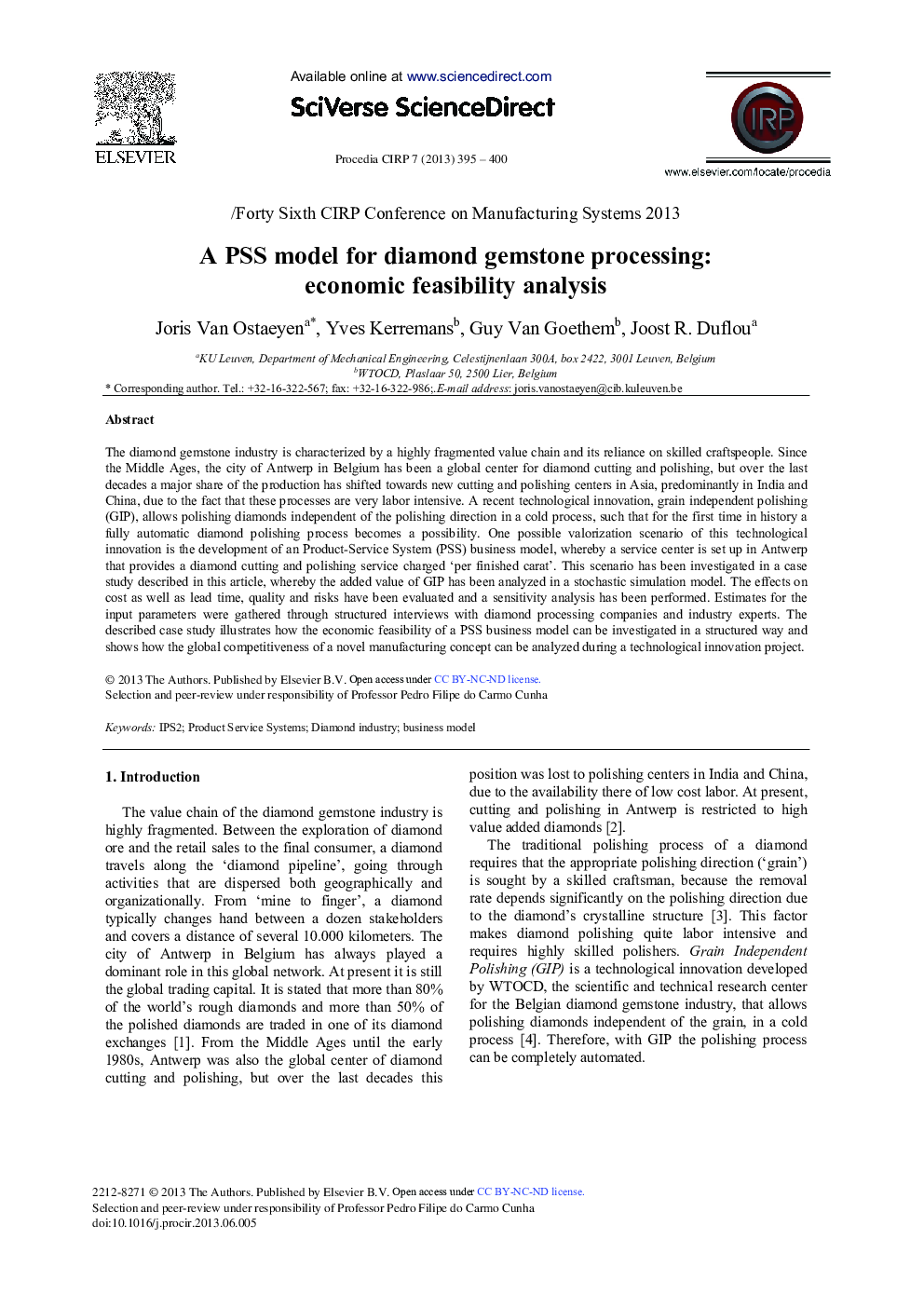| Article ID | Journal | Published Year | Pages | File Type |
|---|---|---|---|---|
| 1701261 | Procedia CIRP | 2013 | 6 Pages |
The diamond gemstone industry is characterized by a highly fragmented value chain and its reliance on skilled craftspeople. Since the Middle Ages, the city of Antwerp in Belgium has been a global center for diamond cutting and polishing, but over the last decades a major share of the production has shifted towards new cutting and polishing centers in Asia, predominantly in India and China, due to the fact that these processes are very labor intensive. A recent technological innovation, grain independent polishing (GIP), allows polishing diamonds independent of the polishing direction in a cold process, such that for the first time in history a fully automatic diamond polishing process becomes a possibility. One possible valorization scenario of this technological innovation is the development of an Product-Service System (PSS) business model, whereby a service center is set up in Antwerp that provides a diamond cutting and polishing service charged “per finished carat”. This scenario has been investigated in a case study described in this article, whereby the added value of GIP has been analyzed in a stochastic simulation model. The effects on cost as well as lead time, quality and risks have been evaluated and a sensitivity analysis has been performed. Estimates for the input parameters were gathered through structured interviews with diamond processing companies and industry experts. The described case study illustrates how the economic feasibility of a PSS business model can be investigated in a structured way and shows how the global competitiveness of a novel manufacturing concept can be analyzed during a technological innovation project.
